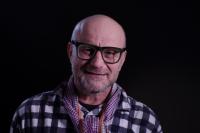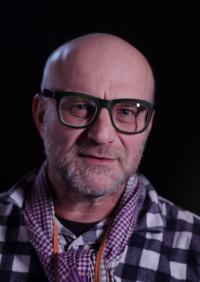“During totalitarianism, I said that democracy meant to me the possibility of getting plaster”
Michal Blažek (born 19 November 1955 in Prague) comes from an artistic family, and after graduating from secondary school he wanted to study at the Academy of Fine Arts in Prague (AVU). However, the first two years he applied he was refused for political reasons, and so he found employment at Geodézie, and later underwent a failed emigration attempt with a group of young artists. Due to preparations for the Helsinki conference, where the Communist regime wanted to show its openness to the children of former party members, he was allowed to study at the sculpture studio at AVU from 1977 to 1983. Before the Velvet Revolution he initiated a petition for improving the situation on the Czechoslovak fine arts scene, and he became director of the independent exhibition gallery U Řečických. At the turn of the 1980s and 1990s he worked as editor-in-chief of the art and music magazine Konzerva (meaning Tin Can). From 1993 to 1995, he was employed as an assistant professor at AVU, since 1995 he has earned a living as a restorer and sculptor. As a restorer, he is part of an international project to renew one temple of the Angkor complex. Currently, he publishes Sochařský zpravodaj (Sculpting Reporter), which he sees as a means of public debate about the future direction of the sculpture studio at the Academy of Fine Arts in Prague.


